SUMMARY
This is AI generated summarization, which may have errors. For context, always refer to the full article.
![[OPINION] Let them play: On Fil-foreigners and the PBA](https://www.rappler.com/tachyon/2021/05/fil-am-pba-sq.jpg)
Like many of you, I grew up playing basketball. Once I’m fully vaccinated, one of the first things I’m doing is lacing up my sneakers and going to hoop. When I was younger, we used to only get one NBA game a week on Saturday afternoons, so I watched a lot of PBA, pulling my socks up high like Samboy Lim and growing sideburns like Benjie Paras. Even after the NBA became more common on cable, it wasn’t as accessible as the Araneta Coliseum or Cuneta Astrodome.
As a 6’1” center, PBA players were also more relatable to my own game, too. I remember the wave of Fil-Am bigs that came in the late ‘90s, guys like Asi Taulava, Nic Belasco, Ali Peek, Don Allado, Dorian Peña, and the Seigle brothers, who each raised the bar for big men in the Philippines in their own ways. More recently, there are guys like Gabe Norwood or Kelly Williams that showed bigs could do more than just play down low.
Wait, what?
Being an immigration lawyer who deals with citizenship questions all the time, I was curious when I saw that there were at least 11 Fil-Ams, including guys who had played for Alab Pilipinas, who were declared ineligible for the recent 2021 PBA Draft. Even if they had Filipino passports, even if they played for the flag, they were stymied by the requirement to produce a certificate of registration from the Bureau of Immigration and an affirmation by the Department of Justice confirming their Filipino citizenship. This wasn’t possible, even with fixers, in the time of a pandemic.
If you’ve never seen one of these affirmations or certificates, they’re typical Philippine government documents – typewritten on ancient paper, stamped with an official seal, and often featuring a photo pasted onto the paper. In short, they look like Recto specials. It’s a little funny that a piece of paper like that is the main requirement, especially when Philippine passports have been e-passports since 2009, with an embedded chip that holds the biopage and biometrics of the passport holder, and a digital signature to verify the authenticity of the data stored on the uniquely numbered chip. It also feels a bit funny that they’re enforcing this requirement even as the SBP is lobbying FIBA for guys like Jordan Clarkson and Jalen Green to be eligible to play on the national team, even if they wouldn’t qualify under FIBA rules, let alone PBA rules.
Citizenship, explained
There are two ways to acquire citizenship at birth. The majority of the world, including the Philippines, follows jus sanguinis, or citizenship by the blood of your parents. This concept traces from Roman law through most of Europe, and shows the Spanish influence on Philippine law. It’s enshrined in Article IV, Section 1, Clause 3 of the 1987 Philippine Constitution, which grants citizenship to those whose fathers or mothers are citizens of the Philippines.
Jus soli, or citizenship by place of birth, regardless of the citizenship of your parents, derives from English common law, although it’s not common in the 54 Commonwealth countries that consider Queen Elizabeth their head of state. With the exception of one Asian, two Oceanian, and three African countries, jus soli is prevalent in the Americas, from South America up through Central America, the Caribbean, and all three countries in North America – Canada, Mexico, and the United States.
Babies can be born dual or even triple citizens, through jus sanguinis from one or both parents and jus soli from land of birth. With an estimated tenth of the Philippine population living and working in over 100 countries around the globe, and many more aspiring to find jobs overseas, there will be more and more dual citizens born around the world with Philippine citizenship. But even just the term Fil-foreigner betrays how many are treated more like foreigners than Filipinos when we return home. Instead of welcoming balikbayans who choose to return to the motherland, we erect barriers.
Who got next?
Almost every basketball player has experienced being intimidated by bigger, stronger, or more athletic competition. But you’ll never get better if you never challenge yourself. In the same way, the Fil-Ams of the late ‘90s and early 2000s raised the level of the game beyond just height. Back then, it wasn’t common for basketball players to lift weights, as coaches taught us to think that it would mess up your jumpshot if you got stronger. But, in order to compete, local-born PBA players started to work out and lift weights as well, raising the level of play.
There are two major non-competitive rules that work to keep Fil-foreigners out of the league. Aside from the extra documents required if you were born outside the Philippines (even if you were otherwise raised in the Philippines and speak Filipino as your first language), there’s also a rule that only five Fil-foreigners are allowed per team. This artificial limit works to keep out players who aren’t superstars, and to push out veterans before their time, as teams need to consider the value of those five slots on the roster.
What if?
Imagine if the NBA had a rule that you could only have x number of black players on a team, or that you had to have at least y white players. How weird would that sound? While we task even our best players to get out of the way and let the import hog the ball, a fifth of the NBA is international-born, and the unlimited infusion of their talents has continued to change and develop the game. Can you imagine the outcry if the NBA put in quotas for players based on place of birth?
Again, the Constitution says that if at least one of your parents is a Filipino citizen, then so are you. Why then do we discriminate against Fil-foreigners, simply because they were born outside the Philippines through no fault of their own? Under the law, we should all be equal. If a player has a valid Philippine passport, and especially if they have already donned the national colors, they should be able to play.
More equal than others?
A tenth of our population is spread out across over 100 countries in the world. While I understand the protectionist urge to protect jobs for locals, we’re only kidding ourselves with these rules. By artificially limiting the level of play, we’re not only discriminating against Filipinos born abroad, but also stifling the level of competition. Yes, there was a Fil-sham era in the early 2000s, and there are guys who have had long and distinguished careers who aren’t actually Filipino. But, there are also guys who were legally Filipino but just didn’t have the right combination of documents. And besides, we have the Internet now – I seriously doubt that a high-level basketball player could fake Filipino heritage today.
How can we become more competitive on a global stage if we put limits on ourselves? In the case of the Rosser brothers, why is Matthew eligible to play and Brandon isn’t, even if they were born of the same parents? Are we a jus sanguinis nation or a jus soli nation? If we’re going with jus soli, there are guys like Kirk Long or Tim Tebow who were born to American parents in the Philippines.
So much red tape
To become a professional basketball player, you need to get a license from the Games and Amusement Board, where the DOJ piece of paper requirement shows up again for Filipinos born abroad. But it’s not just basketball. This same requirement shows up for overseas-born Filipinos trying to get professional licenses from the Professional Regulation Commission in various professions.
Someone like the late Danding Cojuangco or MVP might have the juice to get a star basketball player up to the very top of the DFA to get their Philippine passports. But what about regular overseas-born Filipinos who want to become physical therapists, doctors, accountants, architects, real estate brokers, or any other professionally regulated profession? How can that one piece of ancient typewritten paper from the Bureau of Immigration (don’t forget, you typically have to show the original even if they accept photocopies) be more secure than a machine-readable passport?
Mga kababayan ko
Protectionism only hurts ourselves by placing artificial ceilings on the game. A foreign-born Filipino basketball player isn’t bigger or better than a local simply because of place of birth. Jimmy Alapag is smaller but mightier than me, and probably you, too. Our homegrown game is much more physical and cerebral than the way they play in many other countries. Rather than discriminating against fellow Filipinos because they were born abroad and chose to move back to pursue their dreams, we should welcome them and treat them equally. Instead of being intimidated, we should seize the challenge to innovate and compete, because that’s how we’ll all get better. Not just at basketball, but at life. – Rappler.com
Jath Shao is a lawyer who specializes in all aspects of US immigration and nationality law, and the intersections of immigration law with criminal and family law. A lifetime member of the National Filipino American Lawyers Association, Jath is the first natural-born Filipino citizen in his family, and the father of a child with both jus sanguinis and jus soli citizenship. This piece was inspired by a dad wanting his son to have a fair chance at chasing his dreams.
Add a comment
How does this make you feel?
![[PODCAST] At The Buzzer: The future of Fil-foreigners in PH sports](https://www.rappler.com/tachyon/2021/01/at-the-buzzer-sq-5.jpg?fit=449%2C449)

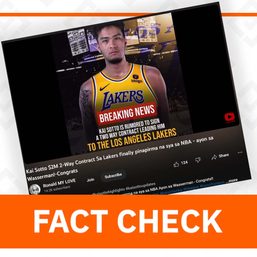
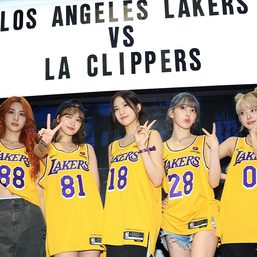

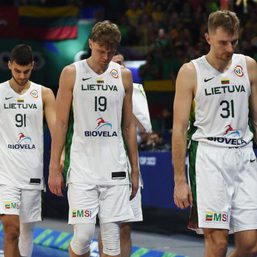
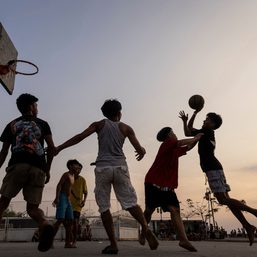
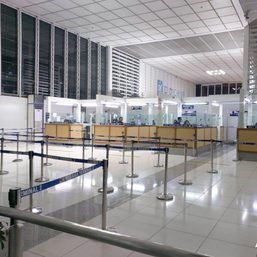
![[Just Saying] Reasons the new travel regulations are flawed](https://www.rappler.com/tachyon/2023/08/TL-travel-regulations-August-31-2023.jpg?resize=257%2C257&crop=281px%2C0px%2C720px%2C720px)

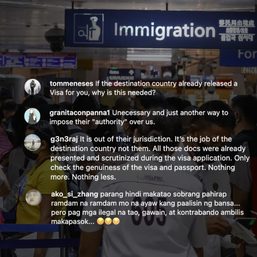
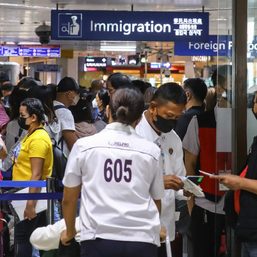
There are no comments yet. Add your comment to start the conversation.